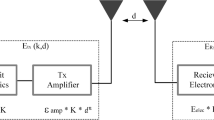Abstract
The utilization of mobile sink in spite of its points of interest carries new difficulties to WSNs. The principle disputes are the position update of sink node to the hub. Every sensor hub should know about the sink position all together that it can move its information to the sink. Existing Flooding technique proposed that the portable sink needs to consistently spread its situation all through the system to advise sensor hubs regarding the sink position. In any case, visit position refreshes from the sink can prompt both maximum power utilization and amplified crashes in the network. To diminish the updation of sink position, different types of routing structures can be utilized. A routing mechanism dependent on the mobile sink is effective if it limits the power utilization and delays in the system network. The primary intention of the study is to design an energy embedded routing protocol based on optimal updation of the mobile sink. Here, the most recent sink position will be spared in the hubs developing the implicit environment. Accordingly, in Embedded routing, the position of the sink node is proliferated to the sensor hubs situated at the discs instead of the solicitation of hubs in the system. The remainder of the hubs can locate the most recent sink position by forwarding solicitation information to the closest disc. Based on the received information, the receiver of the message is identified. This will be performed by optimal fuzzy based clustering technique. The optimization can be done by Oppositional grey wolf optimization (OGWO) algorithm. The efficiency is analyzed by maximum network lifetime, minimum delay etc. The results will be analyzed and compared with existing routing protocols to ensure the efficiency.








Similar content being viewed by others
References
Ahmad, T., Li, X., & Seet, B. C. (2017). Parametric loop division for 3d localization in wireless sensor networks. Sensors,17(7), 1697.
Ahmad, T., Li, X. J., & Seet, B. C. (2018). 3D localization using social network analysis for wireless sensor networks. In 2018IEEE3rdinternationalconferenceoncommunicationandinformationsystems(ICCIS) (pp. 88–92). IEEE.
Akila, I. S., & Venkatesan, R. (2016). A fuzzy based energy-aware clustering architecture for cooperative communication in WSN. The Computer Journal,59(10), 1551–1562.
Akram, M., & Cho, T. H. (2016). Energy efficient fuzzy adaptive selection of verification nodes in wireless sensor networks. Ad Hoc Networks,47, 16–25.
Aranzazu-Suescun, C., & Ardei, M. (2017). Distributed algorithms for event reporting in mobile-sink WSNs for internet of things. Tsinghua Science and Technology,22(4), 413–426.
Brar, G. S., Rani, S., Chopra, V., Malhotra, R., Song, H., & Ahmed, S. H. (2016). Energy efficient direction-based PDORP routing protocol for WSN. IEEE Access,4, 3182–3194.
Carbajo, R. S., Carbajo, E. S., Basu, B., & McGoldrick, C. (2017). Routing in wireless sensor networks for wind turbine monitoring. Pervasive and Mobile Computing,39, 1–35.
Chen, S., & Zhang, D. (2004). Robust image segmentation using FCM with spatial constraints based on new kernel-induced distance measure. IEEE Transactions on Systems, Man, and Cybernetics—Part B: Cybernetics,34, 1907–1916.
Jindal, H., Kasana, S. S., & Saxena, S. (2018). Underwater pipelines panoramic image transmission and refinement using acoustic sensors. International Journal of Wavelets Multiresolution and Information Processing,16(1), 1850013.
Jindal, H., Saxena, S., & Kasana, S. S. (2017). Sewage water quality monitoring framework using multi-parametric sensors. Wireless Personal Communications,97(1), 881–913.
Jindal, H., Saxena, S., & Kasana, S. S. (2017). Triangular pyramidal topology to measure temporal and spatial variations in shallow river water using Ad-hoc sensors network. Ad Hoc and Sensor Wireless Networks,39(1–4), 1–35.
Jindal, H., Saxena, S., & Kasana, S. S. (2018). A sustainable multiparametric sensors network topology for river water quality monitoring. Wireless Networks,24(1), 3241–3265.
Jindal, H., Saxena, S., & Singh, S. (2014). Challenges and issues in underwater acoustics sensor networks: A review. In Proceedingsofinternationalconferenceonparallel,distributedandgridcomputing(PDGC-2014) (pp. 251–255).
Kale, P., & Nene, M. J. (2017). Path reestablishment in wireless sensor networks. In Processofinternationalconferenceonwirelesscommunications,signalprocessingandnetworking(WiSPNET),Chennai (pp. 1659–1663).
Kaswan, A., Nitesh, K., & Jana, P. K. (2017). Energy efficient path selection for mobile sink and data gatheringin wireless sensor networks. International Journal of Electronics and Communications,73, 110–118.
Kaur, S., & Mir, R. N. (2016). Energy efficiency optimization in wireless sensor network using proposed load balancing approach. International Journal of Computer Networks and Applications (IJCNA),3(5), 108–117.
Kevin, P., & Samarakoon, U. T. (2019). Performance analysis of wireless sensor network localization algorithms. International Journal of Computer Networks and Applications (IJCNA),6(6), 92–99.
Khan, Z. A., & Samad, A. (2017). A study of machine learning in wireless sensor network. International Journal of Computer Networks and Applications,4, 105–112.
Lan, K. C., & Wei, M. Z. (2017). A compressibility-based clustering algorithm for hierarchical compressive data gathering. IEEE Sensors Journal,17(8), 2550–2562.
Li, P., Wu, M., Liao, W., & Zhao, M. (2017). A game-theoretic and energy-efficient algorithm in an improved software-defined wireless sensor network. Journal of Latex Class Files,14(8), 1–16.
Madhumathy, P., & Sivakumar, D. (2014). Enabling energy efficient sensory data collection using multiple mobile sink. China Communications,11(10), 29–37.
Merlyn, A. A., & Merlyn, A. A. (2014). Energy efficient routing (EER) for reducing congestion and time delay in wireless sensor network. International Journal of Computer Networks and Applications,1(1), 1–10.
Merzougui, I., & Benabbassi, Y. (2015). Time based fault detection and isolation in wireless sensors network. International Journal of Computer Networks and Applications (IJCNA),2(6), 267–273.
Milton Joe, M., & Ramakrishnan, B. (2015). WVANET: Modelling a novel web based communicationarchitecture for vehicular network. Wireless Pers Communications,85(4), 1987–2001.
Milton Joe, M., & Ramakrishnan, B. (2017). Novel authentication procedures for preventing unauthorizedaccess in social networks. Peer-to-Peer Networking and Applications, 10(4), 833–843.
Mirjalili, S., Mirjalili, S. M., & Lewis, A. (2014). Grey wolf optimizer. Advances in Engineering Software,69, 46–61.
Mohamed, S. M., Hamza, H. S., & AlySaroit, I. (2017). Coverage in mobile wireless sensor networks (M-WSN): A survey. Computer Communications,110, 133–150.
Montero, S., Gozalvez, J., & Sepulcre, M. (2017). Neighbor discovery for industrial wireless sensor networks with mobile nodes. Computer Communications,111, 41–55.
Naidu, S. (2015). Mitigation of energy depletion in wireless ad-hoc sensor networks through path optimization. International Journal of Computer Networks and Applications,1(2), 01–11.
Nishanth, R. B., Ramakrishnan, B., & Selvi, M. (2015). Improved signcryption algorithm for informationsecurity in networks. International Journal of Computer Networks and Applications (IJCNA),2(3), 151–157.
Pino, T., Choudhury, S., & Al-Turjman, F. (2018). Dominating set algorithms for wireless sensor networks survivability. IEEE Access,6, 17527–17532.
Qiao, J., & Zhang, X. (2018). Compressive data gathering based on even clustering for wireless sensor networks. IEEE Access,6, 24391–24410.
Ramakrishnan, B. (2009). Performance analysis of AODV routing protocol in vehicular ad-hoc networkservice discovery architecture. Network,13(14), 65–72.
Ramakrishnan, B. (2010). Analytical study of cluster and sans cluster vehicular ad hoc network communication. International Journal of Computer Engineering and Information Technology,25(1), 01–11.
Ramakrishnan, B., Rajesh, R. S., & Namesh, C. (2010). A study on service procedure in clusteredvehicular communication. International Journal of Advanced Research in Computer Science,1(4), 535–542.
Ramakrishnan, B., Rajesh, D. R. S., & Shaji, R. S. (2010). An intelligent routing protocol for vehiclesafety communication in highway environments. Journal of Computing,2(11), 65–72.
Ramakrishnan, B., Rajesh, R. S., & Shaji, R. S. (2010). An efficient vehicular communication outsidethe city environments. International Journal of Next-Generation Networks (IJNGN),2(4), 1.
Ramakrishnan, B., Sreedivya, S. R., & Selvi, M. (2015). Adaptive routing protocol based on cuckoosearch algorithm (ARP-CS) for secured vehicular ad hoc network (VANET). International Journal ofComputer Networks and Applications (IJCNA),2(4), 173–178.
Ramakrishnan, B., Bhagavath Nishanth R., Milton Joe, M., & Selvi, M. (2017). Cluster based emergency message broadcasting technique for vehicular ad hoc network. Wireless Networks, 23(1), 233–248.
Rani, S., Ahmed, S. H., Talwar, R., & Malhotra, J. (2017). Can sensors collect big data? An energy-efficient big data gathering algorithm for a WSN. IEEE Transactions on Industrial Informatics,13(4), 1961–1968.
Sadiq, A. S., Almohammad, Khadri, T. Z., Khadri, R. A. B. M., Ahmed, A. A., & Lloret, J. (2017) An energy-efficient cross-layer approach for cloud wireless green communications. In Processof2ndinternationalconferenceonfogandmobileedgecomputing(FMEC),Valencia (pp. 230–234)
Saxena, S., Mehta, D., Kaur, J., & Jindal, H. (2014). Acoustic communication characteristics in UWDBCSN. In Proceedingsofinternationalconferenceonparallel,distributedandgridcomputing(PDGC-2014) (pp. 176–180).
Sundararaj, V., Muthukumar, S., & Kumar, R. S. (2018). An optimal cluster formation based energy efficient dynamic scheduling hybrid MAC protocol for heavy traffic load in wireless sensor networks. Computers & Security, 77, 277–280.
Ramakrishnan, B., Selvi, M., & Nishanth, R. B. (2017). Efficiency measure of routing protocolsin vehicular ad hoc network using freeway mobility model. Wireless Networks, 23(2), 323–333.
Todolí-Ferrandis, D., Silvestre-Blanes, J., Santonja-Climent, S., Sempere-Paya, V., & Vera-Pérez, J. (2018). Deploy&Forget wireless sensor networks for itinerant applications. Computer Standards & Interfaces,56, 27–40.
Tunca, C., Isik, S., Donmez, M. Y., & Ersoy, C. (2015). Ring routing: An energy-efficient routing protocol for wireless sensor networks with a mobile sink. IEEE Transactions on Mobile Computing,14(9), 1947–1960.
Wang, Y., Li, D., & Dong, N. (2018). Cellular automata malware propagation model for WSN based on multi-player evolutionary game. IET Networks,7(3), 129–135.
Wang, T., Zeng, J., Lai, Y., Cai, Y., & Wang, B. (2017) Data collection from WSNs to the cloud based on mobile fog elements. FutureGenerationComputerSystems (in press, corrected proof)
Yarinezhad, R., & Sarabi, A. (2018). Reducing delay and energy consumption in wireless sensor networks by making virtual grid infrastructure and using mobile sink. AEU-International Journal of Electronics and Communications,84, 144–152.
Yarinezhad, R. (2018). Reducing delay and prolonging the lifetime of wireless sensor network using efficient routing protocol based on mobile sink and virtual infrastructure. AdHocNetworks.
Yu, T., Wang, X., Jin, J., & McIsaac, K. (2018). Cloud-orchestrated physical topology discovery of large-scale IoT systems using UAVs. IEEE Transactions on Industrial Informatics,14(5), 2261–2270.
Zhou, Z., Xu, J., Zhang, Z., Lei, F., & Fang, W. (2017). Energy-efficient optimization for concurrent compositions of WSN services. IEEE Access,5, 19994–20008.
Zhou, B., Yang, S., Sun, T., & Grattan, K. T. V. (2015). A novel wireless mobile platform to locate and gather data from optical fiber sensorsintegrated into a WSN. IEEE Sensors Journal,15(6), 3615–3621.
Zhou, X., Cheng, Y., Ji, X., & Xu, W. (2017). SADO: State-associated and delay-oriented data collection for intertidal WSNs. In Processof9thinternationalconferenceonwirelesscommunicationsandsignalprocessing(WCSP),Nanjing (pp. 1–6).
Author information
Authors and Affiliations
Corresponding author
Additional information
Publisher's Note
Springer Nature remains neutral with regard to jurisdictional claims in published maps and institutional affiliations.
Rights and permissions
About this article
Cite this article
Ashween, R., Ramakrishnan, B. & Milton Joe, M. Energy Efficient Data Gathering Technique Based on Optimal Mobile Sink Node Selection for Improved Network Life Time in Wireless Sensor Network (WSN). Wireless Pers Commun 113, 2107–2126 (2020). https://doi.org/10.1007/s11277-020-07309-y
Published:
Issue Date:
DOI: https://doi.org/10.1007/s11277-020-07309-y




